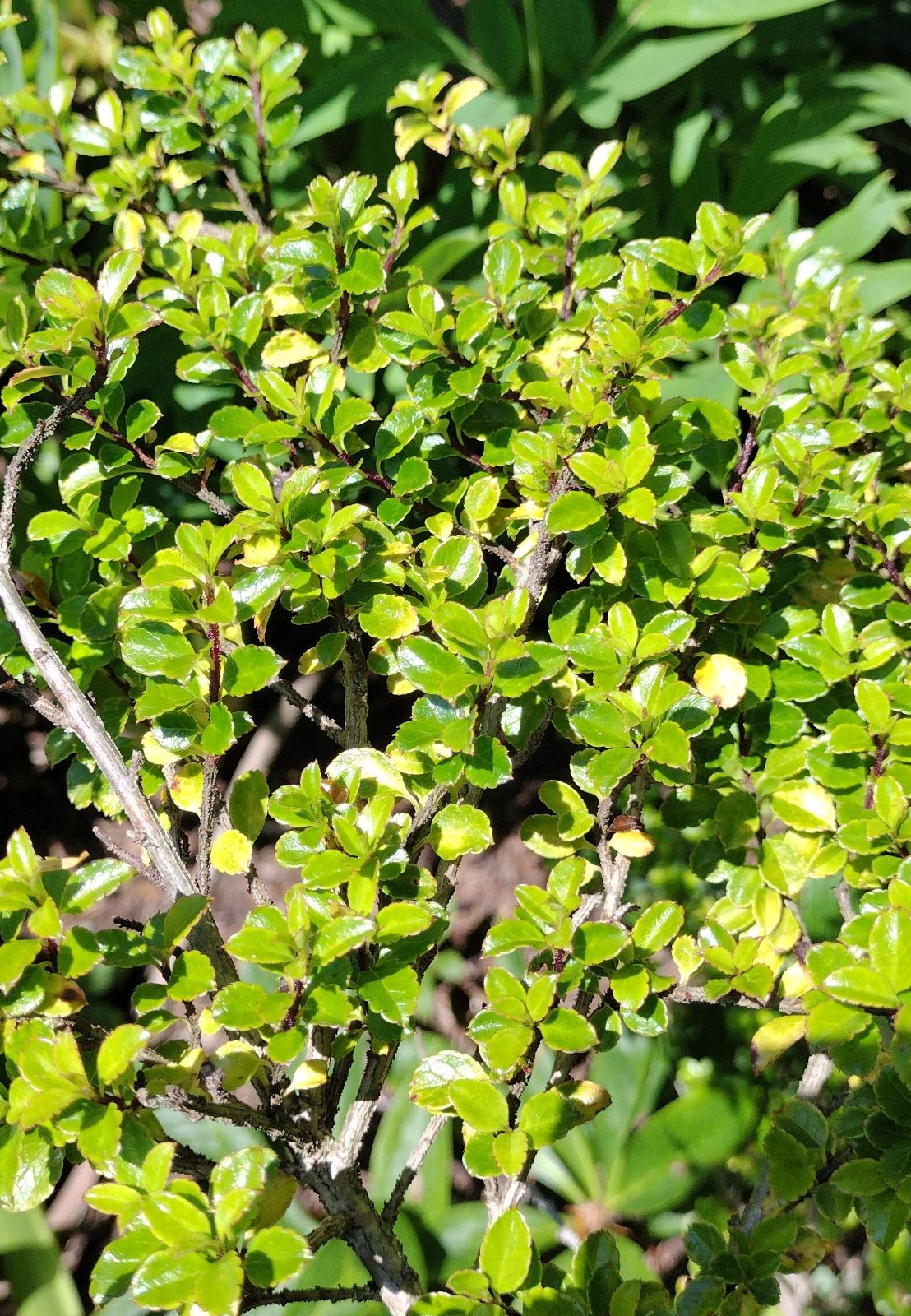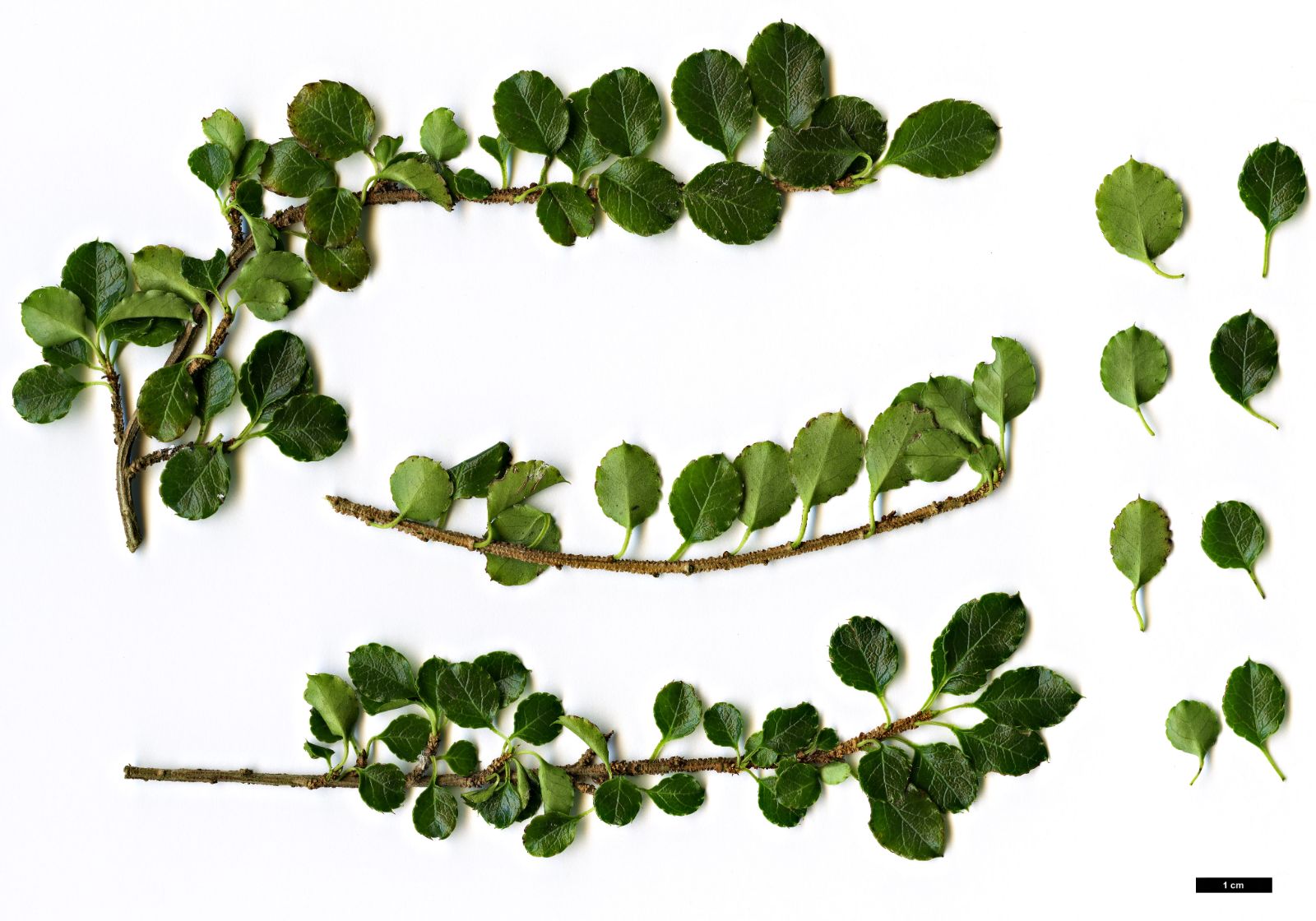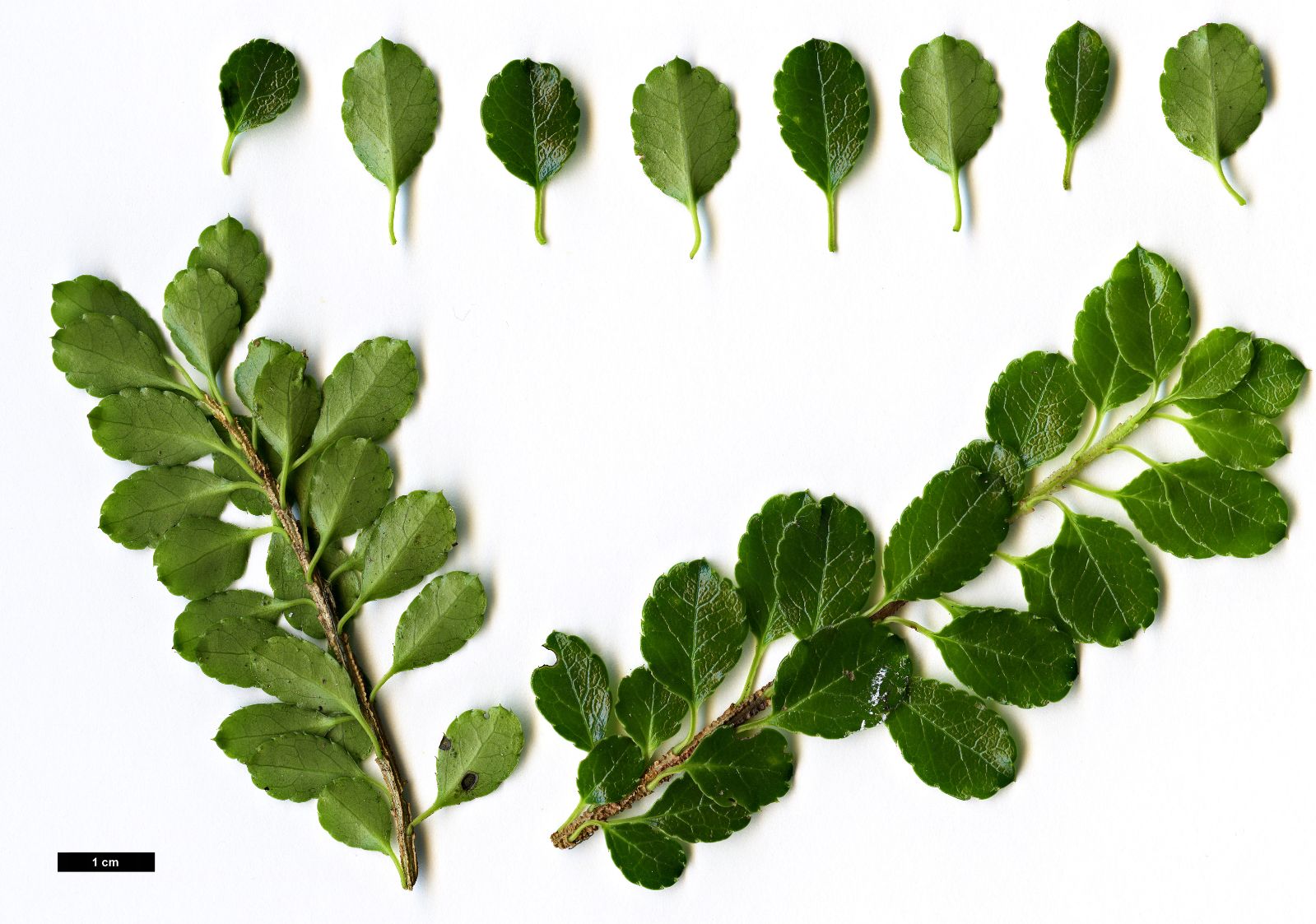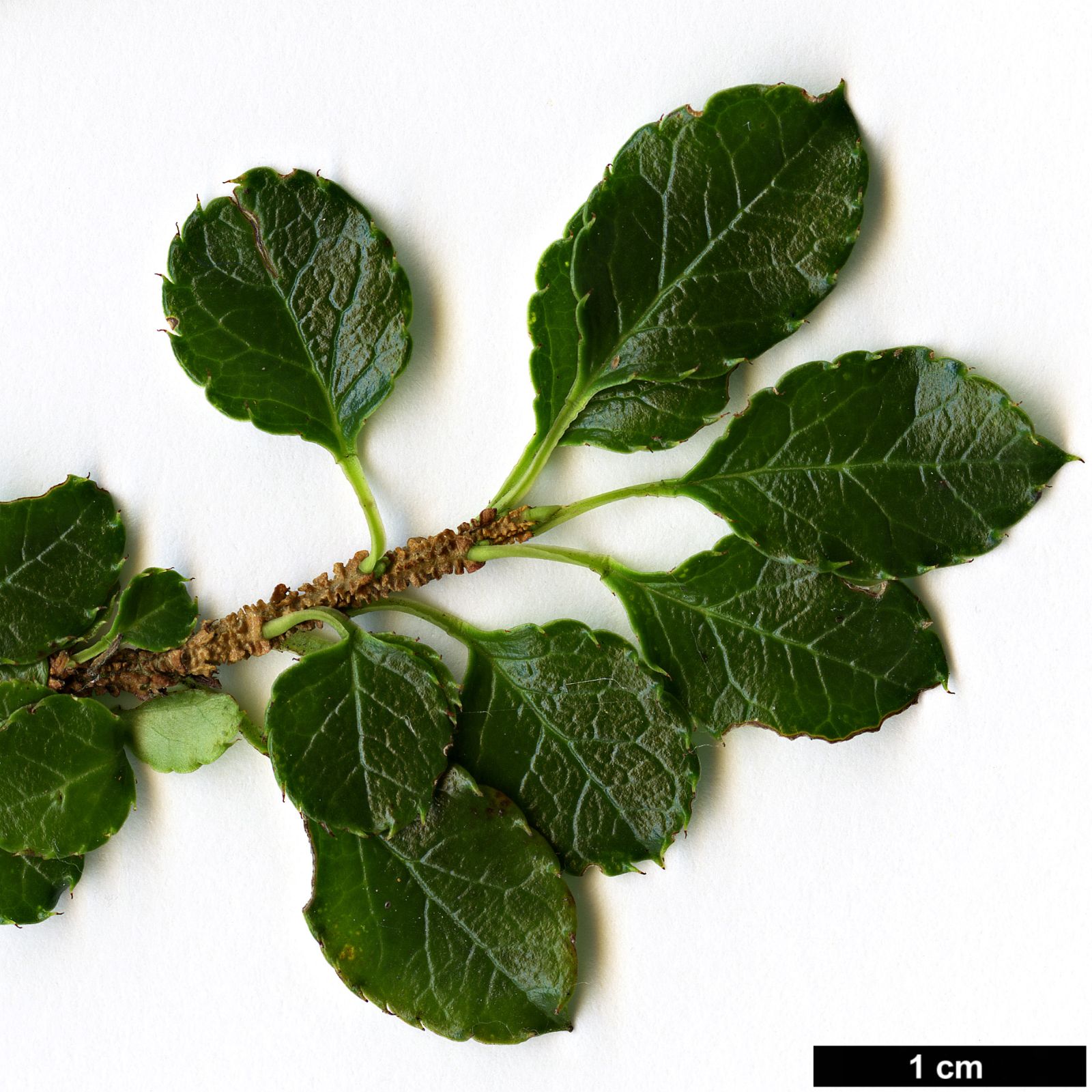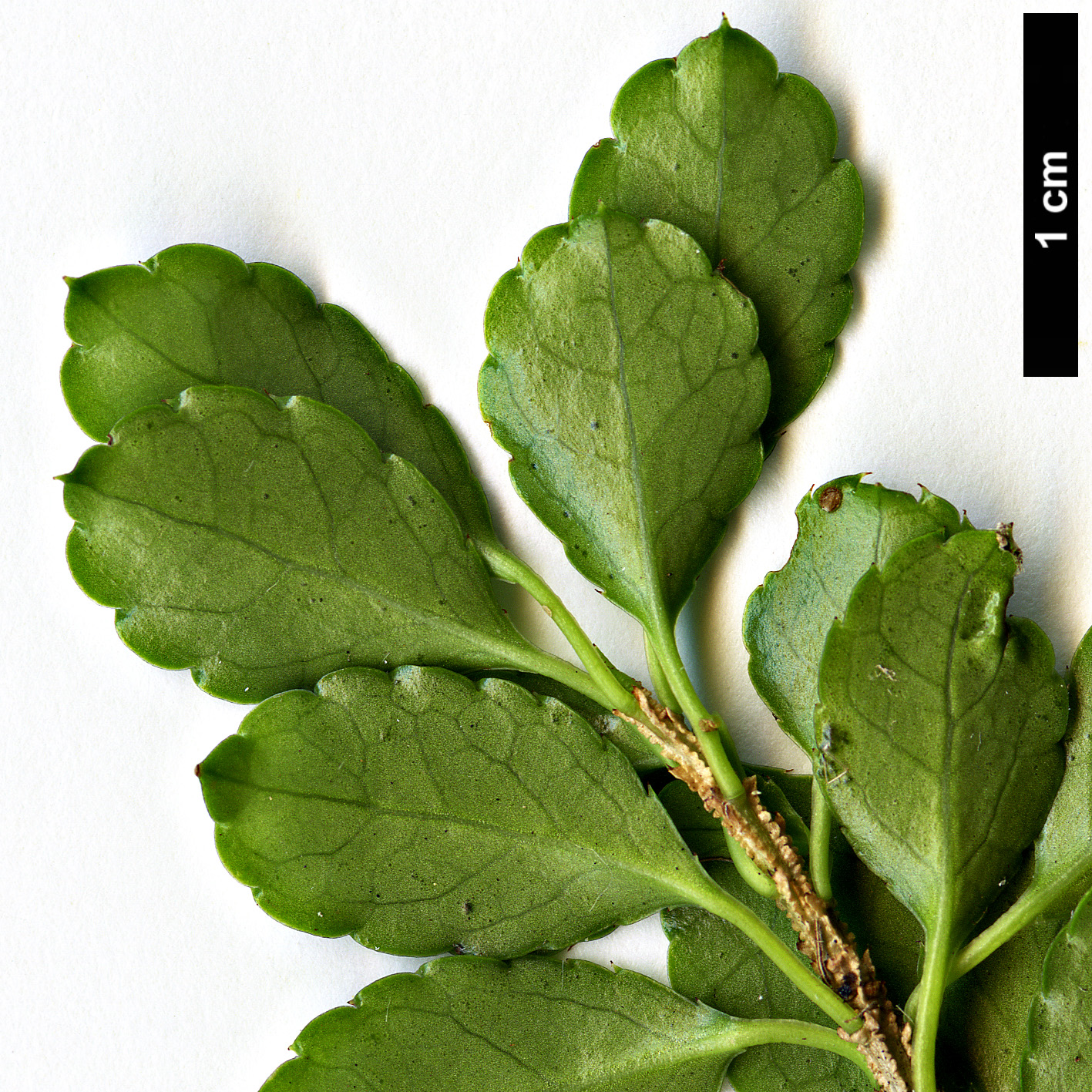Ilex nothofagifolia
Credits
Article from New Trees by John Grimshaw & Ross Bayton
Recommended citation
'Ilex nothofagifolia' from the website Trees and Shrubs Online (treesandshrubsonline.
Genus
Synonyms
- I. intricata Hook. f. var. oblata W.E. Evans
Other taxa in genus
- Ilex × altaclarensis
- Ilex aquifolium
- Ilex bioritsensis
- Ilex buergeri
- Ilex cassine
- Ilex ciliospinosa
- Ilex corallina
- Ilex cornuta
- Ilex crenata
- Ilex cyrtura
- Ilex decidua
- Ilex dipyrena
- Ilex fargesii
- Ilex forrestii
- Ilex geniculata
- Ilex glabra
- Ilex hayatana
- Ilex hookeri
- Ilex integra
- Ilex intricata
- Ilex kingiana
- Ilex laevigata
- Ilex latifolia
- Ilex linii
- Ilex macrocarpa
- Ilex melanotricha
- Ilex mitis
- Ilex montana
- Ilex opaca
- Ilex pedunculosa
- Ilex perado
- Ilex pernyi
- Ilex purpurea
- Ilex rotunda
- Ilex rubra
- Ilex rugosa
- Ilex serrata
- Ilex shennongjiaensis
- Ilex spinigera
- Ilex verticillata
- Ilex vomitoria
- Ilex yunnanensis
Small tree 3–5(–9) m; some young specimens may be epiphytic in the wild. Branchlets glabrous, with longitudinal rows of conspicuous, corky warts; in some specimens, the branches are flattened horizontally, as in Cotoneaster horizontalis Decne. Leaves evergreen, 0.5–1.7 × 0.5–1.2 cm, broadly elliptic, thin and leathery, upper surface glossy with a sunken midrib, lower surface somewhat glaucous with pubescence, particularly on veins, two to three secondary veins on each side of the midrib, margins serrate, with four to seven teeth on each side, apex obtuse to cuspidate; petiole slender, 0.4–0.5 cm long. Inflorescences axillary, fasciculate. Flowers white, 4-merous, inconspicuous. Fruit fleshy, red, globose and depressed, 0.3–0.4 cm, with four pyrenes. Flowering May to August, fruiting October to November (China). Galle 1997, Chen et al. 2006. Distribution CHINA: southeastern Xizang, northwestern Yunnan; INDIA: Assam; MYANMAR; VIETNAM (Fan Si Pan). Habitat Temperate cloud forest between 2300 and 3000 m asl. Ilex nothofagifolia grows in dense shade and is often covered in mosses and lichens. USDA Hardiness Zone 8. Conservation status Not evaluated. Illustration Li et al. 2001; NT401. Cross-reference B445. Taxonomic note The epithet ‘nothofagifolia’ refers to the close similarity of the leaves to those of Nothofagus. The name was originally published as ‘nothofagacifolia’, but was later corrected.
Ilex nothofagifolia has been introduced several times in the past century, first and perhaps unsuccessfully by Kingdon-Ward, but more recently by Peter Cox and Peter Hutchison (Cox & Hutchison 424), from their expedition to northeastern India in 1965. Plants from this collection grow well in the Cox family garden at Baravalla, Argyll on the west coast of Scotland, in comparatively mild conditions. Another specimen from the same collection has done very well in Vancouver since 1989 and has shown no sign of winter damage there, being now a bushy 4 m tall. This example has vigorous vertical stems as well as the spreading branches associated with the species, and looks set to become a nice tree, its dainty appearance a useful foil to heavy-leaved rhododendrons (P. Wharton, pers. comm. 2007). Other than this, however, I. nothofagifolia is scarcely known in North America. Kenneth Cox (pers. comm. 2007), who has also collected the species, in Arunachal Pradesh, reports that only the female trees have the distinctive horizontal branching while the males are less regular, but Susyn Andrews (pers. comm. 2007) has observed male plants with regular branching in cultivation. The specimen from which our illustration (Figure 44) was made is a potted plant growing at Westonbirt and derives from a collection made by Maurice Foster in Yunnan in 1994 (Foster 94116A). Potted plants at Westonbirt have, however, been badly damaged or killed by frost (S. Andrews, pers. comm. 2007). Susyn Andrews believes that it likes mild, very wet conditions to thrive, citing a successful specimen long grown at Inverewe on the west coast of northern Scotland. It is rare in European collections, probably because, as at Arboretum Bokrijk, it does not survive harsh winters. With its diminutive, tightly placed leaves and flattened shoots, it is a very distinctive plant.

